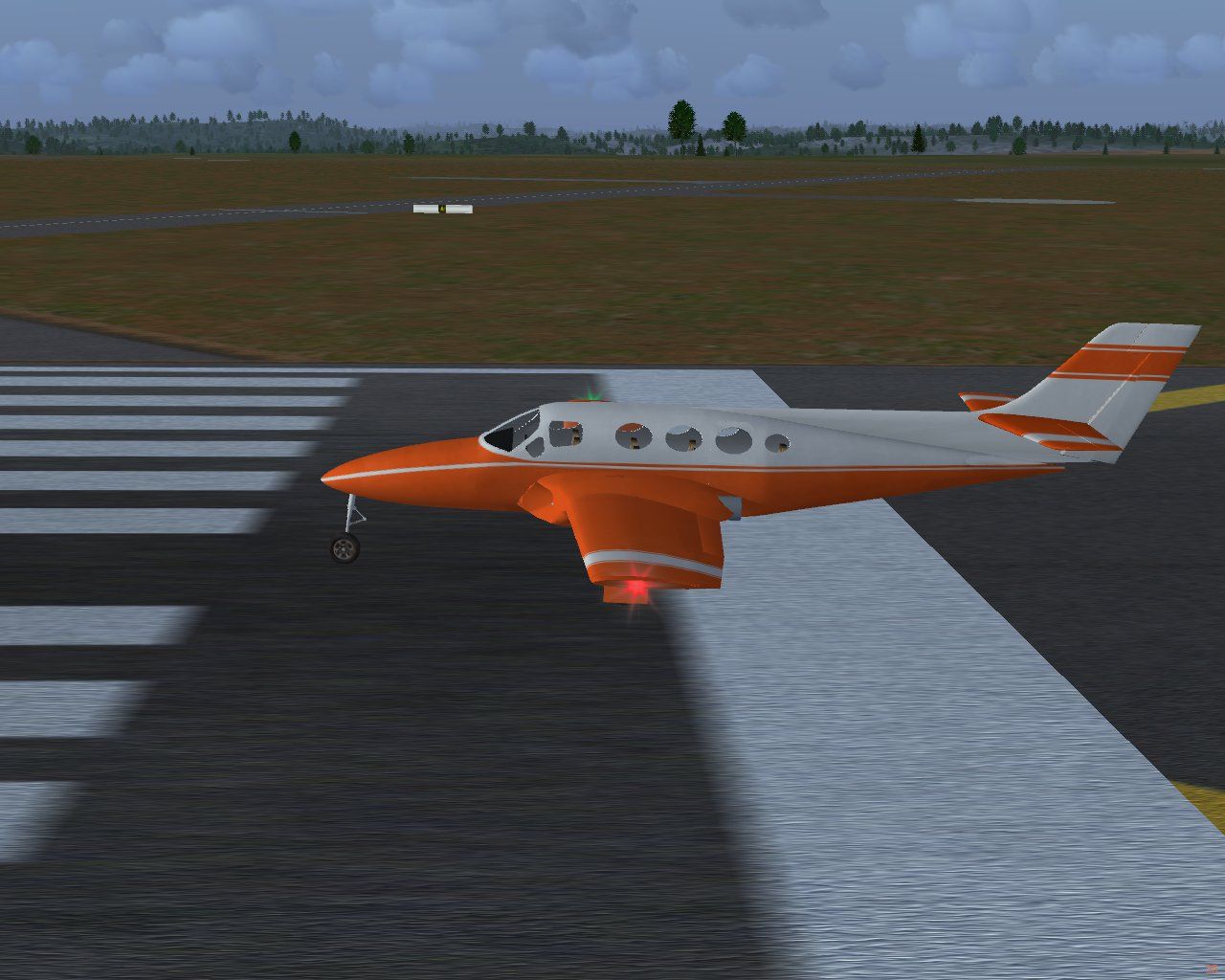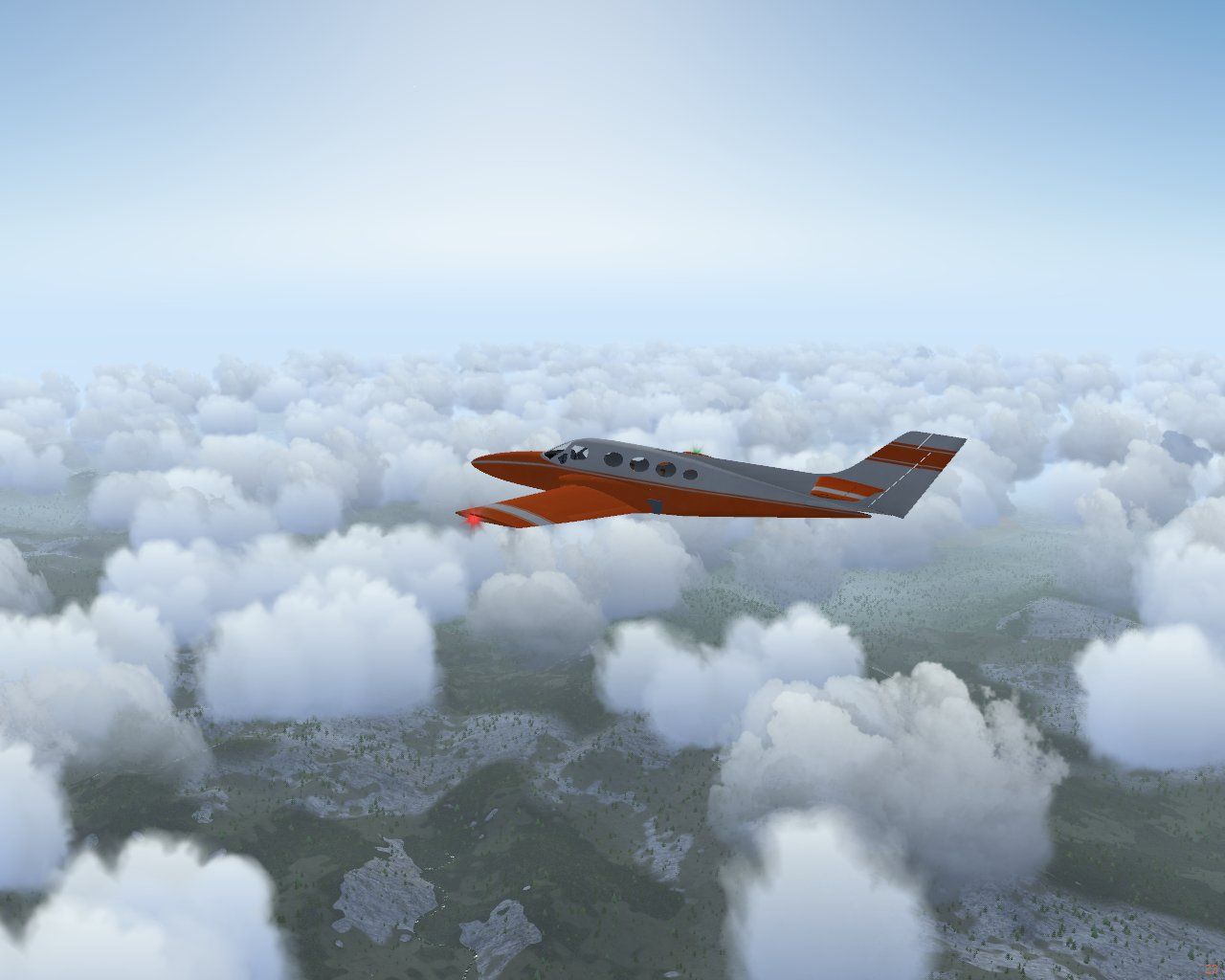Cessna 428: the Peep Tweet, an adventure funjet
Posted: Thu Dec 03, 2015 5:49 pm
Playing a little loose with the jet categories, I made this fictional FG aircraft back in 2012 as a melding of the twin piston/prop, 8 passenger Cessna 421 with the Cessna T37 dragonfly or Tweet military trainer.


It's a rough field, STOL, 10 passenger jet for excursions to airfields and rough landing areas in out of the way places. It features two Garret TFE-751-D high bypass small turbofans, with part of the bypass air flow used for blown flap lift devices on the wing's flaps. https://en.wikipedia.org/wiki/Blown_flap.
The Garret turbofans have a long record of reliability and ease of maintenance in the most primitive of conditions, and are, because of the high bypass ratio, fairly quiet. Also having the engines buried in the wing roots helps to keep the lateral center of gravity small in rotational mass which gives it a very responsive roll rate at approach speeds. This aircraft was born to fly in and out of tricky mountain passages and approaches.
The blown flaps add greatly to it's ability to land and launch it's maximum take-off weight to and from some of the most absurdly short and rough airfields imaginable.
It is equipped with a very strong and lightweight set of long clearance, length and suspension travel landing gear that will soak up much of the rough ground it may encounter. Pressurized to fly up to it's ceiling at 34,000, with generous passenger seating and internal storage bays for expeditions and hiking groups, the seats can be easily removed to convert to a small freight hauler.


It's a rough field, STOL, 10 passenger jet for excursions to airfields and rough landing areas in out of the way places. It features two Garret TFE-751-D high bypass small turbofans, with part of the bypass air flow used for blown flap lift devices on the wing's flaps. https://en.wikipedia.org/wiki/Blown_flap.
The Garret turbofans have a long record of reliability and ease of maintenance in the most primitive of conditions, and are, because of the high bypass ratio, fairly quiet. Also having the engines buried in the wing roots helps to keep the lateral center of gravity small in rotational mass which gives it a very responsive roll rate at approach speeds. This aircraft was born to fly in and out of tricky mountain passages and approaches.
The blown flaps add greatly to it's ability to land and launch it's maximum take-off weight to and from some of the most absurdly short and rough airfields imaginable.
It is equipped with a very strong and lightweight set of long clearance, length and suspension travel landing gear that will soak up much of the rough ground it may encounter. Pressurized to fly up to it's ceiling at 34,000, with generous passenger seating and internal storage bays for expeditions and hiking groups, the seats can be easily removed to convert to a small freight hauler.